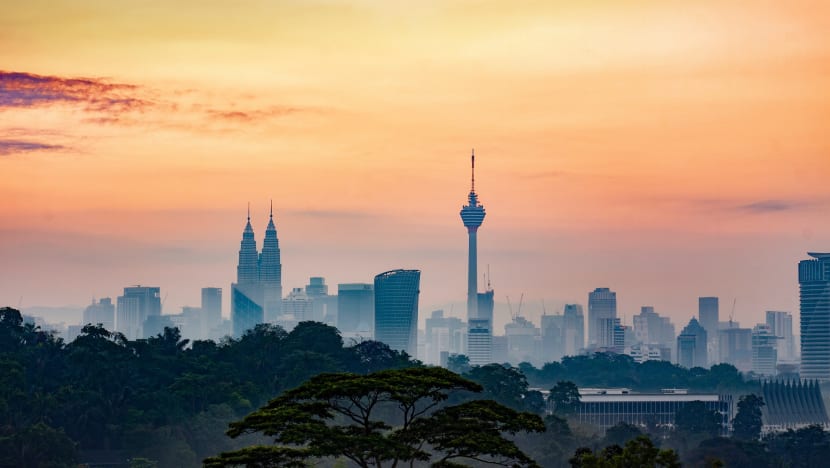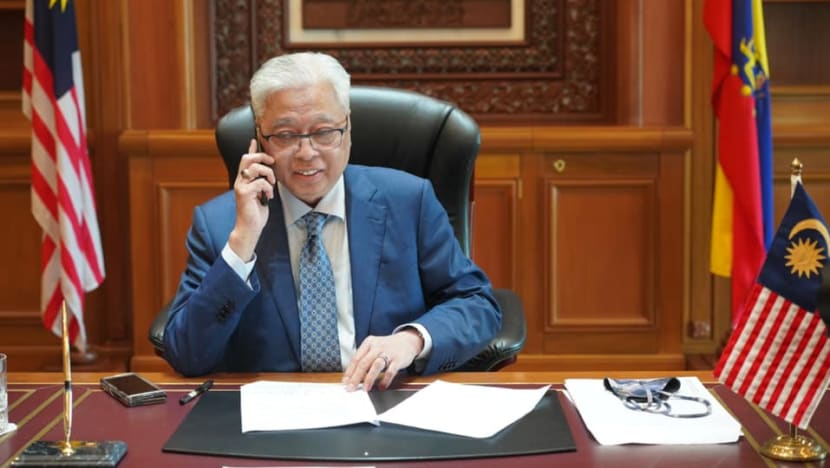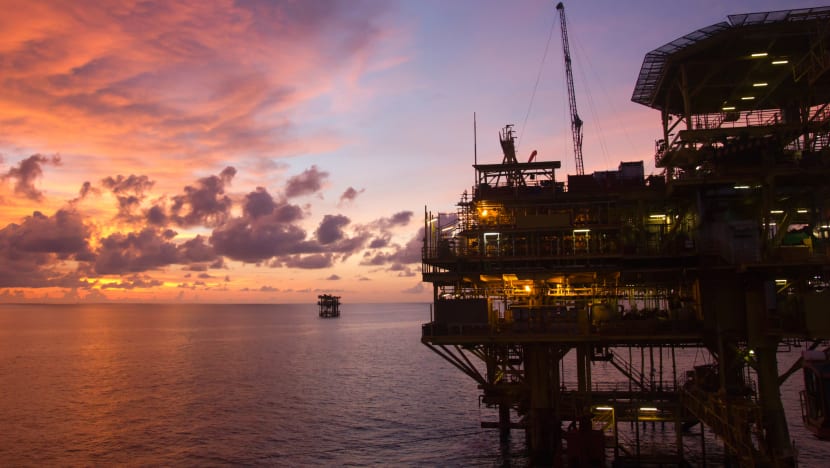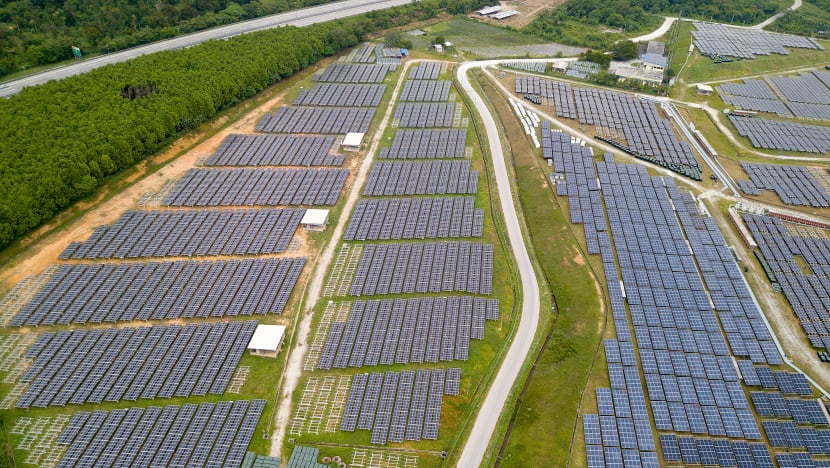Malaysia’s climate plan is high on ambition, but concerns linger over execution: Experts

Malaysia is planning a radical green transformation under its 12th Malaysia Plan. (Photo: iStockl/Ngoc Vuong Van)
BANGKOK: When Malaysia enters negotiations at global climate change talks beginning at the end of this month in Glasgow, it will be with momentum from a sweeping and ambitious national plan for a greener and cleaner future.
On paper, the 12th Malaysia Plan (12MP), tabled by Prime Minister Ismail Sabri Yaakob and passed in parliament on Thursday (Oct 7), is a bold statement with climate change mitigation featuring prominently. The country aims to be carbon neutral by 2050 at the earliest and overhaul its energy, transportation as well as land use sectors.
Electric vehicles will dominate the roads, renewable energy will power the nation’s cities, which will be moulded around green principles. Carbon pricing and carbon tax schemes will come into effect and no new coal power plants will be built, under the plan.
While there is optimism around the level of aspiration, there is also concern among experts that a lack of detail and the limited capacity to implement complex policies could be hurdles to transformative climate action.
“Malaysia has never been short of long term strategic vision. Ambitious planning has not been an issue at all in Malaysia,” said Niloy Banerjee, United Nations Development Programme (UNDP) Resident Representative for Malaysia, Singapore and Brunei Darussalam.
“The challenge here has always been going from plan to work plan, implementation and addressing serious structural constraints on that implementation,” he said.
Others said they had not expected Malaysia to pursue net zero so soon, a policy that puts it among the most ambitious countries on long-term climate strategy in Southeast Asia.
Indonesia aims to be carbon neutral by 2060 for example, Thailand even later, while Singapore wants to reach the target “as soon as viable” in the second half of the century.
“Actually, we were very, very surprised. Because we had not heard about Malaysia thinking about carbon neutrality by 2050,” said Meena Raman, president of Friends of the Earth, Malaysia.
“It’s giving signals for the next five years, but we don't have the details. We have not seen any roadmap. The devil will always be in the details,” she said.
Crucial aspects of the rollout of the 12MP are being established by the federal government. National policies centred on the environment, climate change and biodiversity are still to be updated, and details on a carbon pricing framework, fuel economy standards and incentives for renewable energy have yet to be determined.

Banerjee said having a “north star'' to guide economy-wide reforms is useful, but the shallow details leave holes throughout important policy areas.
“The lack of details does make me cautious,” said Darshan Joshi, an analyst for the Institute of Strategic and International Studies (ISIS) Malaysia.
“It is a holistic document that displays the government’s understanding of all the steps that have to be taken in order for Malaysia to effectively address climate change at the domestic level.
“But until we know the details of our policies, it is tough to assess our true ambition,” he said.
While the 12MP has lofty goals, the policy document Malaysia has submitted to the United Nations Framework Convention on Climate Change (UNFCCC) Secretariat does not currently reflect the ambitious stance the prime minister has espoused.
While the country has upgraded its Nationally Determined Contribution (NDC) pledge - submitted every five years as part of the Paris Agreement - the way it calculates its planned emissions reductions still relies on a “mathematical quirk”, Joshi said.
The NDC target is not absolute when it comes to cutting greenhouse gases, rather it calls for a 45 per cent reduction in emissions intensity against the country’s GDP by 2030.
Greenhouse gas intensity is the ratio of a country’s emission to the economic value it generates. It means that Malaysia’s emissions could actually rise, depending on the growth of its economy.
“Ultimately, our goal collectively should be to halt the growth in total emissions, which is something our pledge does not necessitate,” said Joshi.
There is “wriggle room” in the NDC, Banerjee said, while noting that UNDP would continue to lobby for improvements.
“That’s an ongoing conversation. It’s really a question of convincing the leadership, particularly the environment ministry. That one is achievable - a more ambitious NDC that is in absolute terms not relative to something,” he said.
“In Malaysia, conversations take time to gather momentum.”
The 45 per cent target was a 10 per cent increase on Malaysia’s previous NDC and is pledged unconditionally, meaning it is not contingent on international support or market based mechanisms.
It was also widened to include a greater range of damaging pollutants including methane, nitrous oxide and hydrofluorocarbons.
Yet there are major challenges ahead this decade to even reach that goal, many of them centred on the rollout of clean energy infrastructure.

THE RENEWABLE ENERGY ROLLOUT
Malaysia’s early rollout of renewable energy has yet to gain the speed or depth of regional neighbours like Vietnam and to a lesser extent Thailand.
Throughout 2020, of all the new capacity of renewable energy in the ASEAN region, only 3 per cent of it was installed in Malaysia, according to the ASEAN Centre for Energy (ACE).
The federal government plans to dramatically increase its clean assets. The electricity sector contributes about one third of the country’s entire carbon footprint, so it wants 31 per cent of its installed power capacity to be renewable by 2025.
“Which on the surface seems like a rapid expansion of our ambitions. But there’s a caveat – our previous targets didn’t consider large-scale hydropower to be a form of renewable energy, owing to its various biological and ecological costs, but this target does,” said Joshi of ISIS.
He added that by counting hydropower, the government has been able to instantly add 14 per cent to its renewable energy quota, taking it to a current total of 24.6 per cent.
The vast majority of the country, however - especially Peninsular Malaysia - continues to rely on fossil fuels, especially coal and natural gas.
With a pledge to not build new coal-fired power plants, gas will be prioritised as a transition fuel, as coal plants are retired and until solar and wind can meet Malaysia’s ever increasing energy demands.
“We cannot change everything overnight. Now, Malaysia is heavily dependent on coal. We are looking for renewable energy to be dominant,” said energy expert Hoyyen Chan, a researcher at Invite Green Consultancy.
“For the transition period I think natural gas will play a very important role. But we have to be careful.
“We have to make sure that its role in replacing coal is still contributing to emissions reduction, otherwise there’s no point,” she said.
The COVID-19 pandemic has slowed down the rollout of several renewable energy projects, as global supply chains were disrupted and energy needs dropped.
“Looking at the bright side, it actually gives us a moment of clarity and an opportunity to ramp up renewable energy deployment to shift towards a greener economy,” said Beni Suryadi, project manager of the ASEAN Climate Change and Energy Project at the ACE.
“The challenge is real. Particularly in the next four to five years when we are still facing the economic impact of the COVID-19 pandemic.
“The government needs to continue its approach to balance the three elements in the energy trilemma - guarantee of energy supply, affordability and sustainability,” he said.
Japan has offered assistance with new technologies, including Carbon Capture, Utilisation, and Storage, while a major solar initiative is underway including a 1GW tender worth close to US$1 billion.
“But the constraint here is that it caps at 50 megawatts (per project). Some of the industry is looking for more than that,” Chan said.
“All these things become a push, a force. The industry is ready to go green but if you put in limitations, you limit opportunity. The industry is ready to invest but there’s nowhere for them to invest,” she said.

POLITICAL PRESSURES
Malaysia has experienced a period of unstable politics, with shifting political coalitions and Ismail Sabri the third person to hold the top job since the last election.
It adds an extra layer to the already daunting task of overhauling multiple economic sectors, drafting new legislation and unpicking the opaque divisions of responsibilities held by both the federal and state governments, several of which overlap in important areas linked to climate change, like land use, biodiversity, forestries and carbon offsets.
“They all come in this grey zone of, is it federal or is it state? Who gets to lead? And it mirrors itself in the financial transactions between federal and state and what kind of incentives the federal government can put out,” UNDP’s Banerjee said.
Experts agree that real climate change action is - at face value - agreed upon in principle by both sides. But the turbulence in parliament and disruption within ministries is affecting the ability to generate coherent long-term policies.
“I think political instability is a huge challenge and it impedes all sorts of policy planning and implementation,” said Ili Nadiah Dzulfakar, the co-founder of Klima Action Malaysia.
“In Malaysia, we love bombastic ideas about development and all these nice policy statements. But the implementation side is really weak. Then comes the monitoring and evaluation, and that’s also problematic,” she said.
“We need more than just targets. We need to talk about systematic change and this target is not a people-driven solution. These pledges hide inequalities. That’s what I’m scared of.”
Global political pressure has not yet been fully felt in Malaysia, according to Banerjee, but soon it will. This could be led by the European Union, which is targeting palm oil, a major domestic industry, and planning a taxation regime that will place duties on products that are audited for their carbon footprint.
Malaysia, as part of a bloc of developing nations, is expected to continue pushing for more finance and assistance from the developed world in order for it to maintain its climate pledges.
This falls under the principle of “common but differentiated responsibilities and respective capabilities” (CBDR), which dozens of countries subscribe to. It acknowledges that some countries historically have played a bigger role in causing climate change, while others have limited resources to solve it.
Developed nations had pledged to jointly mobilise US$100 billion every year to assist other nations with climate finance. It will be a key focus at the COP26 talks in Glasgow.
Overwhelmingly that target is not being met, although the United States has pledged US$11.4 billion a year by 2024 in public finance to developing countries to support climate action.
“It’s totally realistic and fair,” said Danny Alexander, vice president and corporate secretary of the Asian Infrastructure Investment Bank, about the developing world’s need to urgently tap climate finance.
“The financial resources are available and I think it’s quite reasonable for developing countries to say, ‘we recognise this challenge, we want to play our part, we know we need to but we need the financial resources to be deployed to help us’, and I think those resources are definitely coming,” he told CNA.
Indonesia is one country that is vocal about it only striving for net zero if given outside support, but Malaysia's target, according to its updated NDC, “will be achieved through domestic measures”.
Given the country’s fiscal challenges, it is a misguided strategy, according to Friends of the Earth’s Raman.
“It sounds like Malaysia is on the same footing as the US or the UK. But actually that’s not fair because I don’t believe that the developed world should be allowed to get away with insufficient 2050 targets, and to continue to take up the remaining carbon budget,” she said.
As the clock ticks, climate change impacts are already being felt across Malaysia. Temperature rises in cities have been dramatic, flooding is increasingly damaging at the same time as some regions suffer water shortages as rain becomes more sporadic and inconsistent.
The 12MP will include more flood mitigation measures, fiscal policies to support forest conservation and a blue economic blueprint for coastal and marine areas, amid the threat of rising sea levels, according to the prime minister.
“Overall, it’s an ambitious aspiration. We cannot deny that.” Chan said.
“To me, with this very clear policy direction, it’s a bright move. Whether we’ll be able to achieve it though, no one knows about that.
















